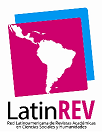Efectos del seguro de salud en las decisiones de gasto e inversión de las familias rurales en el Perú
DOI:
https://doi.org/10.56216/radee012022jun.a01Palabras clave:
seguro integral de salud, aseguramiento universal, shock de salud, diferencias en diferenciasResumen
El presente estudio analiza el efecto de la cobertura del Segura Integral de Salud (SIS) sobre el ingreso, gastos e inversión en capital humano ante la ocurrencia de una enfermedad al interior de los hogares rurales peruanos a través del empleo de un modelo PSM-DID (Propensity Score Matching con Diferencias en Diferencias). Se encuentra que, ante un shock de salud, los hogares cubiertos por el SIS mitigan su riqueza -proxy del ingreso de largo plazo- al no desprenderse de sus activos para contrarrestar la ocurrencia de una enfermedad o accidente. Asimismo, se observa que, ante un shock de salud, los hogares cubiertos por el SIS experimentan en decrecimiento en su ingreso y gasto de corto plazo, respectivamente. Estas últimas relaciones precisan analizarse con cautela dada la fuerte fluctuación de ingresos y gastos de los hogares en el ámbito rural peruano.
Descargas
Citas
Angelucci.M, G.de Giorgi, M.A. Rangel & I. Rasul (2010) “Family Networks and School Enrollment: Evidence from a Randomized Social Experiment,” Journal of Public Economics 94, 197-221.
Atkinson, A. (2016): Inequality. What can be done? Cambridge: Harvard University Press.
Bernal, Noelia; Carpio, Miguel & Klein, Tobias (2017): “The effects of access to health insurance: Evidence from a regression discontinuity design in Perú”. Journal of Public Economics Vol. 154, 122-136.
Binci, M., Hebbar, M., Jasper, P. & Rawle, G. (2018): Matching, differencing on repeat - propensity score mathing and difference-in-difference with repeated cross-sectional data: Methodological guidance and an empirical application in education. Oxford Policy Management Working Paper.
Bitran, Ricardo; Muñoz, Rodrigo & Prieto, Lorena (2010): Health Insurance and Access to Health Services, Health Services Use, and Health Status in Peru. En Escobar, Maria Luisa; Griffin, Charles & Shaw, Paul (editors). The Impact of Health Insurance in Low-and Middle-Income Countries. Washington DC: The Brookings Institution
Caliendo, M. & Kopeining, S. (2008): “Some practical guidance for the implementation of propensity score matching”. Journal of Economic Surveys, Vol. 22: 31-72.
Dercon, S. & P. Krishnan (2000), “In sickness and in health: Risk sharing within households in rural Ethiopia”, Journal of Political Economy 108 (4), 688-727.
Di Prete, T. & Gangl, M. (2004), “Assessing Bias in the Estimation of Causal Effects: Rosenbaum Bounds on Matching Estimators and Instrumental Variables Estimation with Imperfect Instruments”. Sociological Methodology. Vol. 34, Issue 1, 271-310.
Erikson, R. & Goldthorpe, J. (2002): “Intergenerational Inequality: A Sociological Perspective”. Journal of Economic Perspectives. Vol. 16, No. 3 (Summer 2002), pp. 31-44.
Gebel, M. & Vobemer, J. (2014): “The Impact of employment transitions on health in Germany. A difference-in-difference propensity score matching approach”. Social Science & Medicine, Vol. 108, pp. 128-136.
Gertler, P., Gruber, J., (2002), “Insuring consumption against illness”, American Economic Review, 92 (1), 51–70.
Heckman, J., Ichimura, H. & Todd, P. (1997): “Matching as an Econometric Evaluation Estimator: Evidence from Evaluating a Job Training Programme”. The Review of Economic Studies, Vol. 64 (No. 4, Special Issue: Evaluation of Training and Other Social Programmes), pp. 605-654.
Instituto Nacional de Estadística e Informática (INEI) (2016b). Encuesta Nacional de Hogares Metodología Actualizada: ficha técnica – ENAHO PANEL 2007-2013. Lima: Instituto Nacional de Estadística e Informática. Consulta: 13 de junio de 2018 [http://iinei.inei.gob.pe/microdatos/]
Instituto Nacional de Estadística e Informática (INEI) (2016a). Encuesta Nacional de Hogares Metodología Actualizada: Condiciones de vida y pobreza – ENAHO PANEL 2007-2013. Lima: Instituto Nacional de Estadística e Informática. Consulta: 13 de junio de 2018 [http://iinei.inei.gob.pe/microdatos/]
Islam, A., & P. Maitra (2012), “Health shocks and consumption smoothing in rural households: Does microcredit have a role to play?" Journal of development economics, 97(2), 232-243.
Leuven, E. & Sianesi, B. (2003): “Psmatch2: Stata module to perform full Mahalanobis and Propensity Score Matching, Common Support Graphing and Covariate Imbalance Testing”.
Liu K. (2016), “Insuring against Health Shocks: Health Insurance and Household Choices”. Journal of health economics, 46 (2016), 16-32.
Liu, W., Kuramoto, J., & Stuart, E. (2013): “An Introduction to Sensitivity Analysis for Unobserved Confounding in Non-Experimental Prevention Research”. Prevention Science, 14 (2013), 570-580.
Ministerio de Salud (MINSA): Cuentas Nacionales de Salud, Perú 1995-2012. Lima: Ministerio de Salud. Dirección General de Planeamiento y Presupuesto.
Mohanan M (2013) Causal effects of health shocks on consumption and debt: quasi-experimental evidence from bus accident injuries. Rev Econ Stat. 2013 May; 95(2): 673–681.
Minsa OPS/OMS (2015). Cuentas Nacionales de Salud, Perú 1995-2012. Lima.
Skoufias & Quisumbing (2005), “Consumption Insurance and Vulnerability to Poverty: A Synthesis of the Evidence from Bangladesh, Ethiopia, Mali, Mexico and Russia”, The European Journal of Development Research, Vol.17, No.1, March 2005, pp.24–58.
Torche, F. (2014): “Intergenerational Mobility and Inequality: The Latin American Case”. Annual Review of Sociology, Vol. 40, pp. 619-642.
Torche, F. & Lopez-Calva, L. (2013): “Stability and Vulnerability of the Latin American Middle Class”. Oxford Development Studies, Vol. 41 (9), pp. 409-435.
Descargas
Publicado
Cómo citar
Número
Sección
Licencia

Esta obra está bajo una licencia internacional Creative Commons Atribución-NoComercial-SinDerivadas 4.0.
Todo el contenido de la Revista de Análisis y Difusión de Perspectivas Educativas y Empresariales - RADEE, está publicado bajo una Licencia Creative Commons







